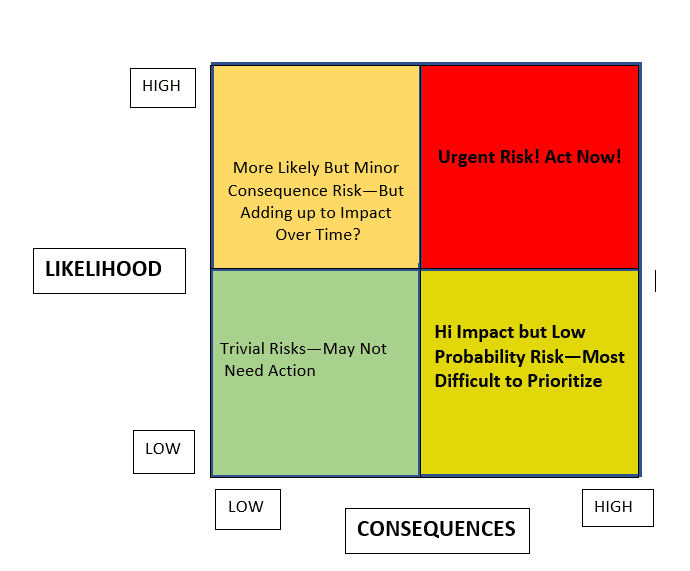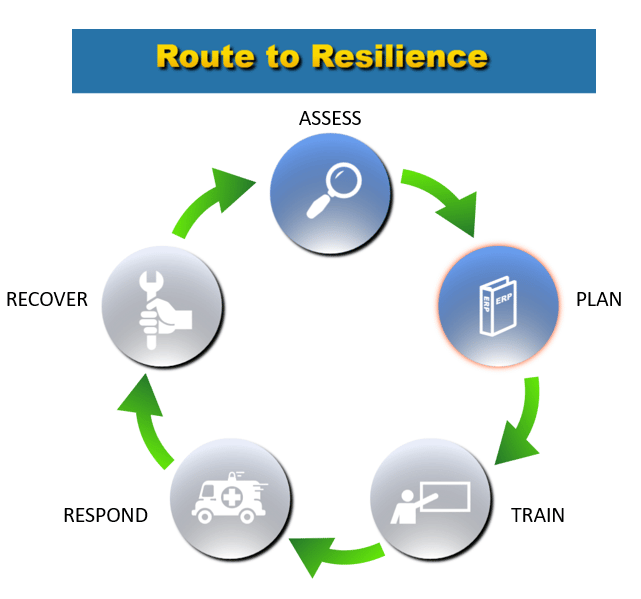Resiliency is a popular term in the news today, from individual wellness to the fate of the planet. What does it mean for water utilities? This is a brief overview of the concept, practices, and regulations around resilience as it is relevant to water and wastewater utilities. Resilience and emergency planning are closely related. But most important is this message: resiliency is an ongoing process, not a crisis plan on a shelf. It can strengthen every aspect of your utility. Resiliency means business.
This overview starts you on the path to system resilience. Part 2 in this series presents next-step tools and training resources. Part 3 will focus specifically on understanding climate trends and future uncertainty as part of resiliency planning.
What does “resilience” mean for water systems?
Definitions of resilience include ideas like the capacity to recover from disruption or crisis to the status quo quickly. One of the hard-earned lessons in the disaster response field has been that failure occurs when little attention is given to ongoing capacities, practices, and even support of daily operations. We will look at examples of what this means below.
Figure 1 points out this relationship between resiliency and emergency planning. Section 2013 of the American Water Infrastructure Act of 2018 (AWIA) creates deadlines for conducting Risk and Resilience Assessments (RRAs) and maintaining Emergency Response Plans (ERPs). The first deadlines for self-reported certification of RRAs were in 2020-21 with the most recent being June 30, 2021, for systems serving populations of over 3,300 but less than 50,000. The ERPs, based on those assessments, must be updated every five years. A helpful template for the plans is one of the many tools we’ll note in the second part of this series. Risks included in AWIA now encompass malevolent acts such as digital system attacks as well as intentional contamination of water supplies.
All aspects of your business can affect overall resilience of service delivery. Here are three examples from among the functional areas in Figure 1. Financial resilience requires adequate funds for unexpected but not necessarily emergency or extreme events. Ongoing attention to rate levels and budget allocation practices is essential. Risk assessment requires identifying and looking at vulnerabilities of every asset in your business, from source water, major tanks/treatment works, or distribution networks to the robustness of simple electrical panels and accessibility of critical roads and buildings. This all depends on the basic task of maintaining your asset management database.
Not all resources—and vulnerabilities—are hard facilities. How is your personnel resilience? Workforce development includes training, cross-training, and recruitment as well as attention to health and well-being of your people themselves. In fact, a recent concept called Community-Based Water Resilience involves thinking about interdependencies and partnerships, beyond traditional types of mutual-aid agreements and your state’s WARN assistance network for water utilities. The COVID-19 pandemic has underscored the necessity to think about how to support your personnel, such as through short-term loans of operators or services, not just trucks, tanks, and tools.
Assessing risk
But how do you organize your thinking about risk? Any hazard or threat (whether rising waters or seizing of your online information) is only a risk if you have assets that are vulnerable. Likewise, occasional loss of personnel may not reduce resiliency if you have cross-training and enough people to call on. But which risks demand more priority action than others? Setting priorities requires assessing the LIKELIHOOD the threat will occur and the CONSEQUENCE if it does (Figure 2). Pairing threats with assets/functions and assessing priority are the essential frameworks for risk management to enable choices for risk reduction and boosting resilience.
Organizing your resilience work
Risk assessment is only one—and an early—phase of an ongoing resilience effort life cycle—not an emergency plan on a shelf. Water utilities are using frameworks to help structure and support progress. EPA’s Route to Resilience online framework can assist smaller utilities with a concise starting point and advice on steps take. The Route to Resilience tool (Fig. 3) is a 5-part program with brief videos, explanations, and links for resources and actions to take. It is more focused on natural hazards and emergency response planning rather than the broadest view of resilience, but it is an excellent overview of the types of tools available for analyzing your resilience and an overall lifecycle effort any utility should pursue. Large utilities are now using innovative frameworks to address resiliency with help from the Water Research Foundation, Association of Adaptation Professionals and other alliances. Check out a recent webinar geared toward small systems, as well.
In Part 2 of the Resiliency Means Business blog we map out those and many other free tools for resilience in more detail.



